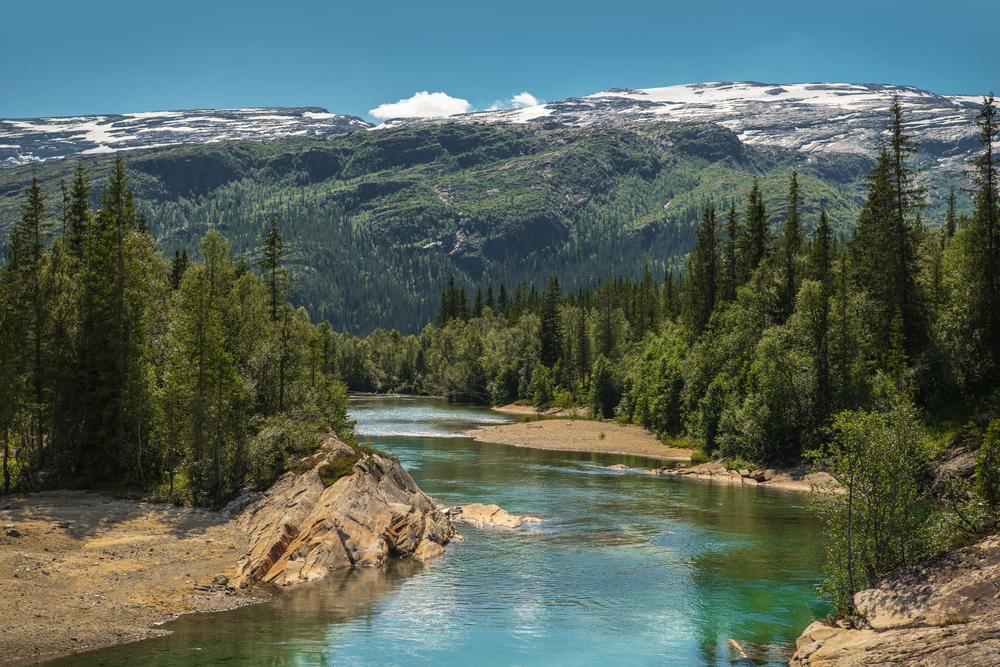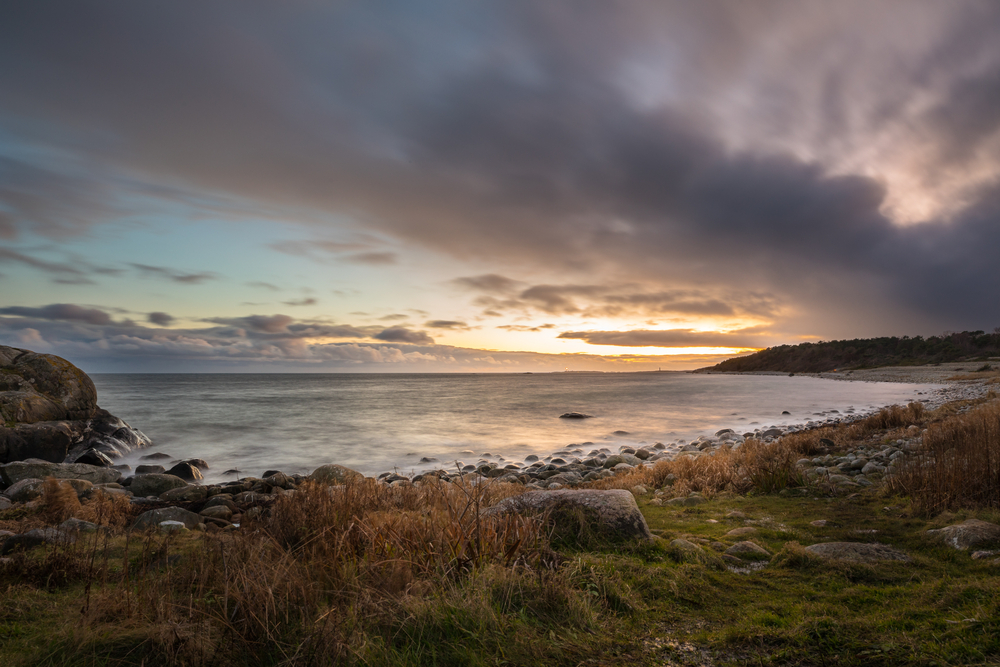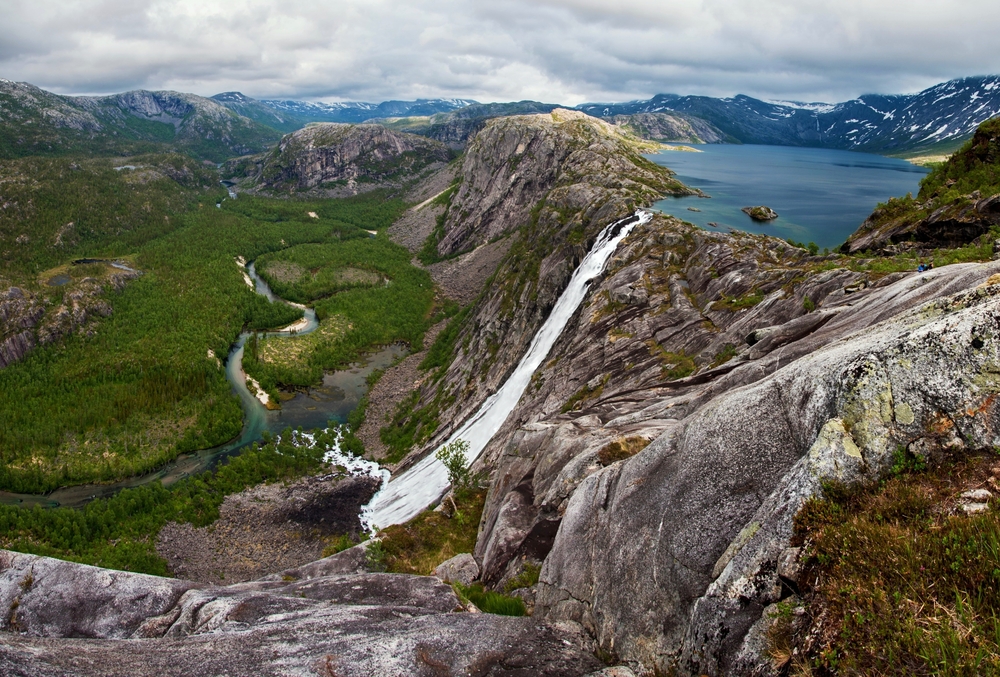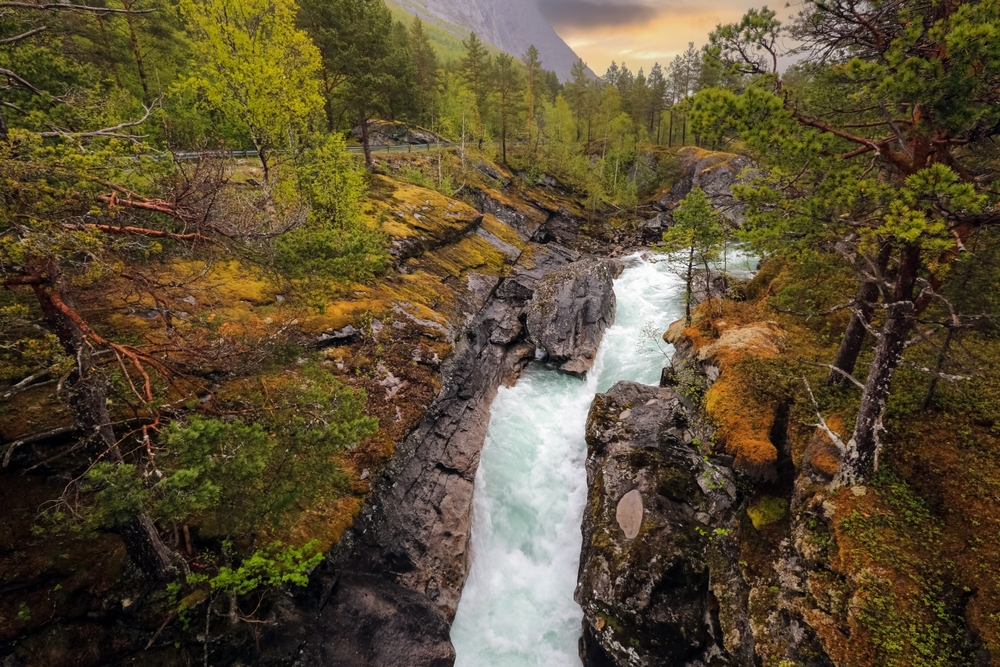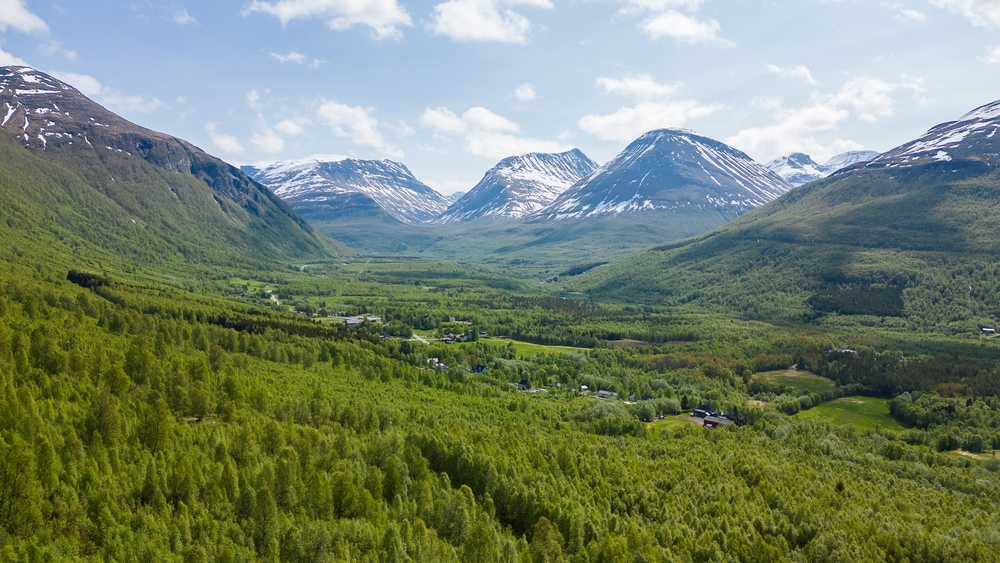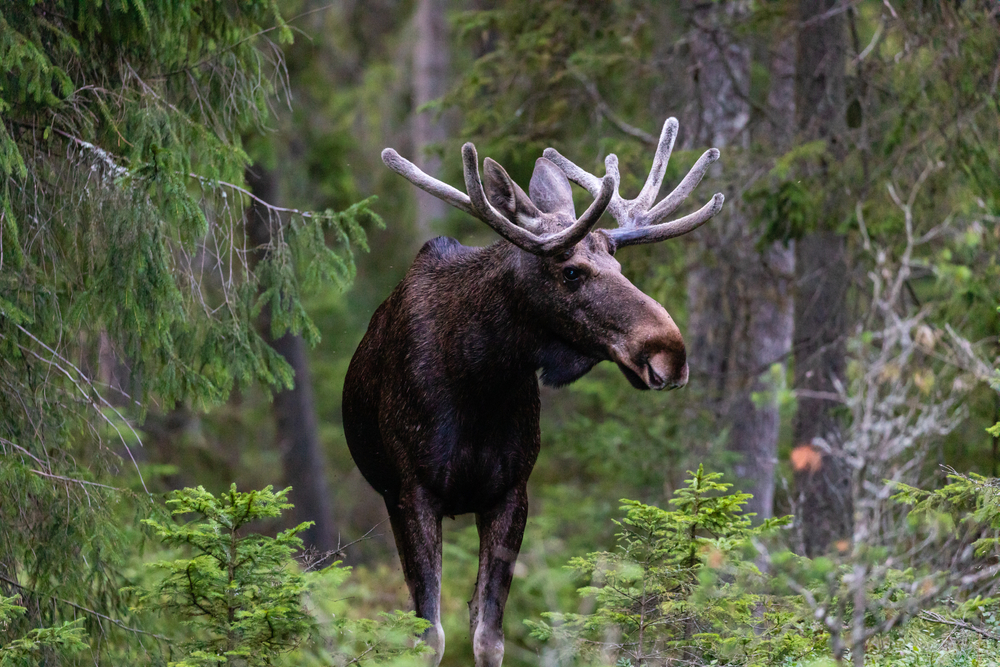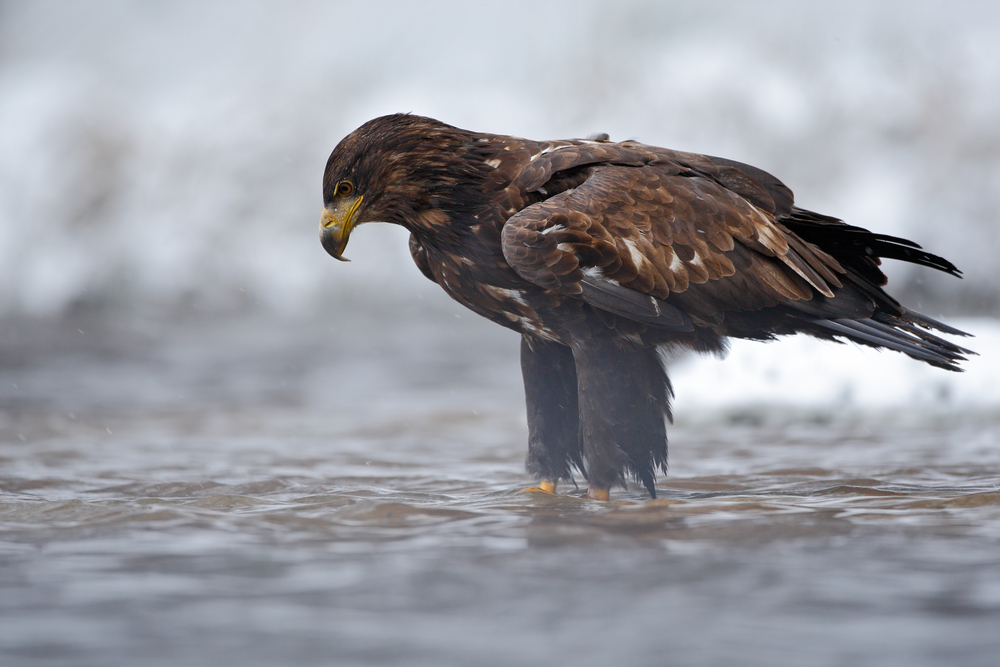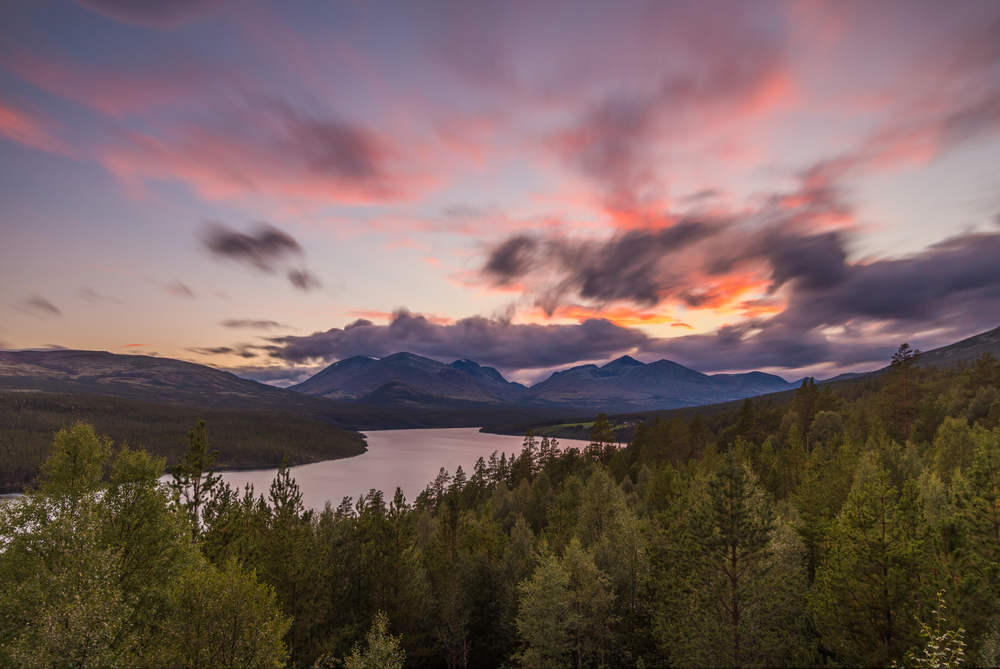Saltfjellet-Svartisen Overview
Saltfjellet-Svartisen National Park, or Saltfjellet-Svartisen nasjonalpark in Norwegian, is a vast protected area in Nordland County, Norway. Spanning approximately 819 square miles (2,120 square kilometers), it is one of the largest national parks in the country.
The park is located just south of the Arctic Circle, covering a diverse landscape that includes glaciers, mountains, deep valleys, and expansive plateaus. Its most striking feature is the Svartisen Glacier, Norway’s second-largest glacier, which covers about 143 square miles (370 square kilometers) and consists of two main ice caps, Vestisen and Østisen.
The park also includes part of the Saltfjellet mountain range, which is characterized by rugged peaks, rolling hills, and deep ravines carved by ancient glacial activity. The landscape varies from alpine tundra and bare rock to lush valleys filled with birch and pine forests, creating a dramatic contrast between ice and greenery.
The park is home to an array of wildlife that thrives in its remote and pristine environment. Among the most notable mammals found here are the Eurasian lynx, wolverine, moose, and Arctic fox, the latter of which has been the focus of significant conservation efforts. Reindeer, both wild and semi-domesticated by the indigenous Sámi people, roam the high plateaus.
Birdwatchers will find Saltfjellet-Svartisen an excellent destination, as it provides habitat for golden eagles, gyrfalcons, and rough-legged buzzards, along with numerous smaller bird species that inhabit the park’s wetlands and forests. The park’s diverse ecosystems also support fish populations in its many rivers and lakes, making it an attractive location for anglers seeking trout and Arctic char.
A major attraction of Saltfjellet-Svartisen National Park is its accessibility despite its remote setting. The scenic E6 highway and the Nordland Railway pass through the park, providing stunning views of its varied landscapes. The Svartisen Glacier is a primary highlight, drawing visitors who wish to experience its icy expanse up close. Guided glacier hikes allow adventurers to explore its dramatic crevasses and icy blue formations, while boat trips across the fjords offer unique perspectives of the massive ice sheet.
The park’s many trails and mountain paths invite hikers to immerse themselves in the wilderness, from short scenic routes to demanding multi-day treks through the rugged terrain. Cycling and fishing are also popular activities, as well as wildlife spotting, particularly in the quiet, untouched areas of the park.
The park also holds significant cultural and historical value, as it has been a key region for the Sámi people for centuries. Reindeer herding remains an important part of their traditional way of life, and visitors may encounter Sámi settlements and cultural sites that offer insight into their customs and history. This connection to indigenous culture adds another layer of depth to the visitor experience.
Conservation efforts in Saltfjellet-Svartisen focus on protecting its delicate ecosystems, particularly its glaciers, which are experiencing the effects of climate change. The Arctic fox, once nearly extinct in Norway, has seen some recovery due to breeding and reintroduction programs.
Responsible tourism and environmental regulations help maintain the park’s pristine nature, ensuring that its landscapes and wildlife remain protected for future generations.








































































